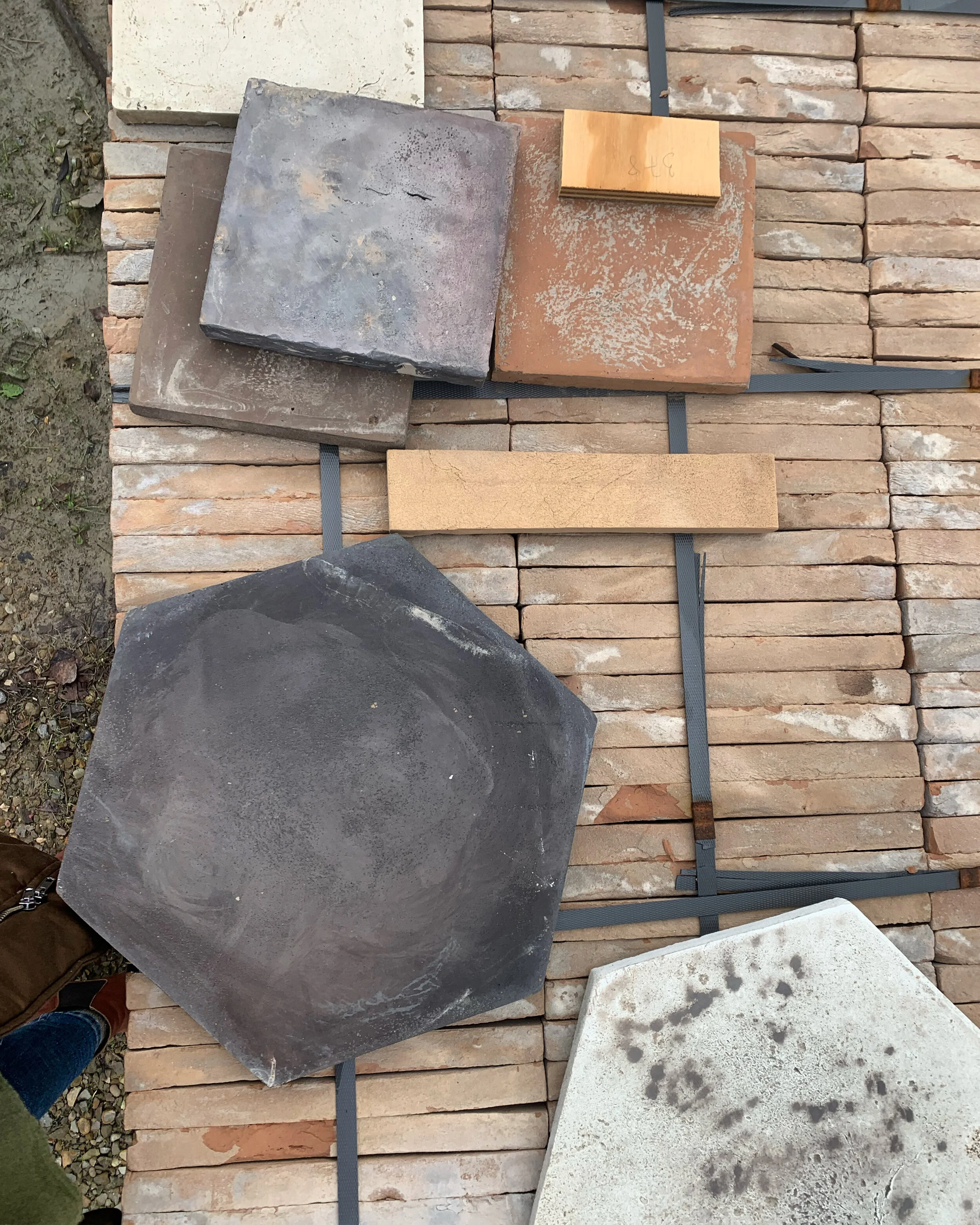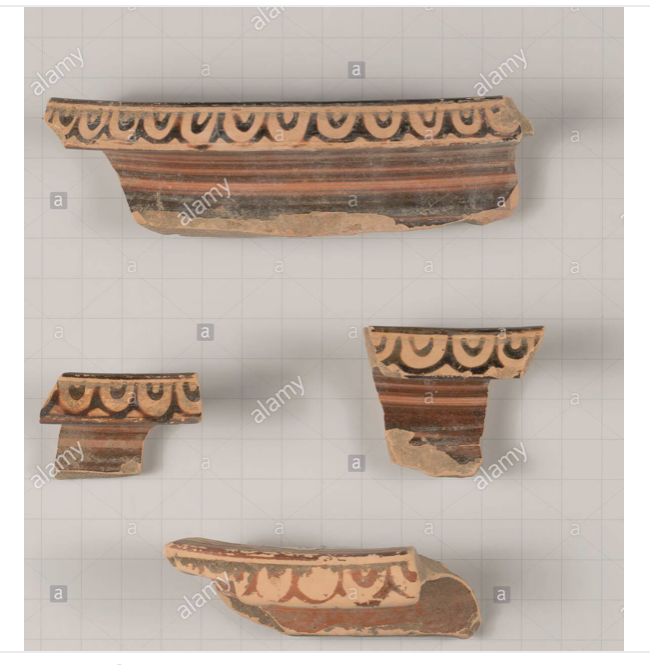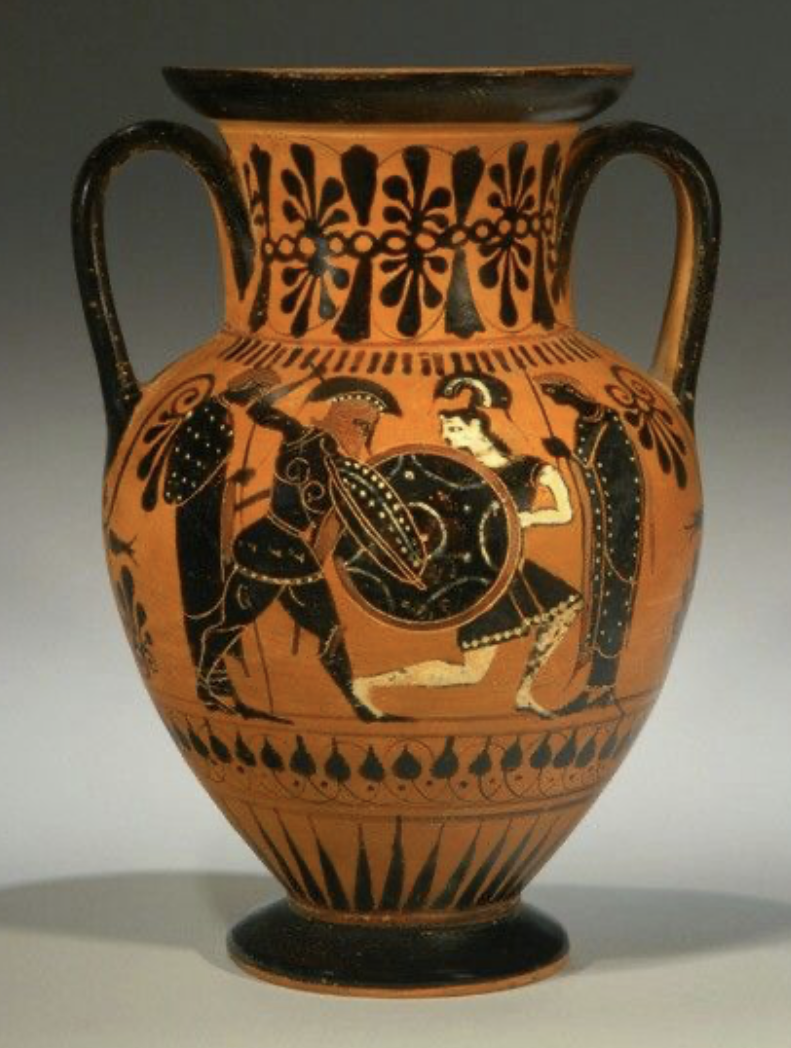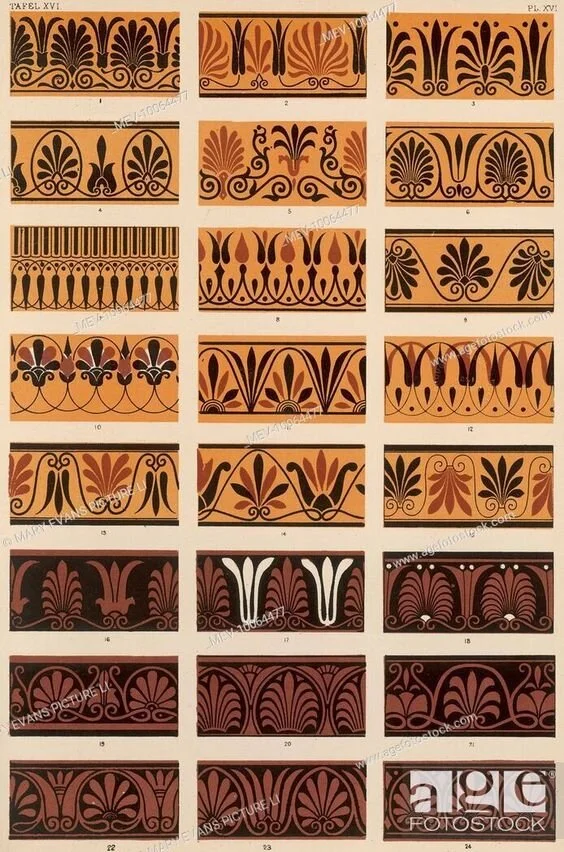a tale of tile - pt.1
In general, my idea for the overall interior concept was to keep everything quite neutral, paired back, and artisan. However, there were a couple of small spaces in the house that I’d had these long-held ideas of where I’d like to bring in more of a flair and unusual element to the design.
A few of these ideas came from my travels…either a particular piece I collected on a trip or an interior detail I once stumbled upon. Others were just some of the many Pinterest pins that have existed on my vision board for the house for years. I’ve abandoned many of these ideas as the house has taken shape, in order to leave room for the space, the clean, the calm. But there are still a few of them that I haven’t let go of. One of those ideas that for some reason I couldn’t break away from was the idea of somehow incorporating hexagonal beveled mirror tiles in one of the bathrooms. A bit of surprise bling amongst the earth-plastered walls.
But how to incorporate it was the first question. How to do it subtly enough where it looked thought-through and not random. So I created a little niche in the master bathroom behind the vanity area…a narrow strip that spans the height of the wall which also includes the square picture window.
Then, I discovered that finding the exact perfect (and vintage) tiles wasn’t an easy task.
But I sometimes secretly like when a task is challenging because it pushes me to creativity. I rarely…and I sincerely mean that…rarely. ever. settle.
I consider myself an optimist and so I always think that there’s a way to do something even if it’s not obvious. There isn’t an existing job that you want? Make one up. No way I can build on this piece of agricultural land? Give me two years and I’ll do the work to get through the regulations.
Although this is a small example - tiles - it is one of the many things I’ve found ways around during this process which led to a more creative path of doing things. So instead of giving up the idea of this strip of tiles, I decided to combine this with another element that I somehow wanted to incorporate somewhere in the house - handmade terra cotta.
Traditionally the farmhouses here are filled with terra cotta tiles - from the roofs to the interior and exterior floors. And although the usual color of the fired clay which is more orange in tone, I was more interested in the “bucchero” black colored tiles which will go more with the overall interiors.
It’s not a true black, but instead a warm dark grey which shows the wild nature of the clay in the texture and varied color patterns.
I knew I wanted to commission a few larger exterior pots for a few trees, but I thought perhaps this could work for the tiles in this niche as well…
Then it was down a deep rabbit hole from there. If I was going to commission tiles, I could make any shape I wanted. What should it be? Where would the inspiration come from?
The house has evolved for me into becoming a showcase and homage in a way to the area - from using Italian products and craftmanship, to the colors of the plasters, the exterior finishing materials, and even the shapes of some of the metal work. I’ve drawn a lot of inspiration from the ancient Etruscans which still define this area in so many ways.
In one of the national Etruscan museums a few kilometers away (as well as the handful of others scattered throughout central Italy) there are amazing collections of jewelry, vases, weapons, and funerary urns. The tombs of so many of these people dot the hillsides, and I wouldn’t be surprised if some are under the exact hill where the house now sits.
I’ve always been attracted to their ornate designs, and have a few other ideas of where to use that inspiration. However for the subject of tiles, I searched for an Etruscan pattern that I could use for a repeating tile pattern.
Finally I found one that I saw on a couple of vases in similar forms. This specific one is from the Etruscan collection in Orvieto, and shows the pattern I was most drawn to. However I inverted it as it then resembles the cypress tress in the landscape.
From here, I started a bit of a project to create the tile pattern and then discuss the idea with the local forno (oven) where they make a fire the clay tiles…
(to be continued…)







